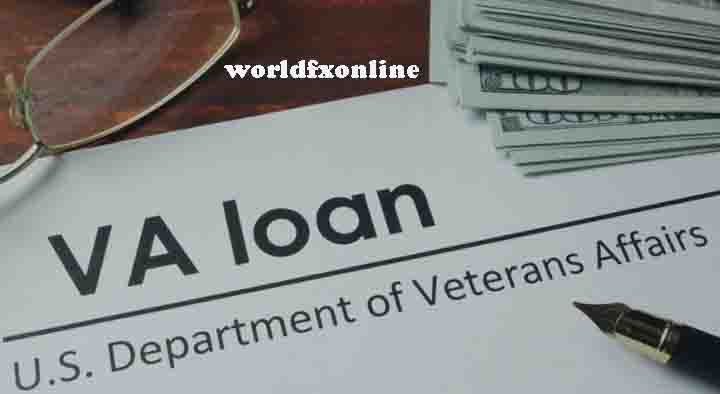VA loan are for current and experienced service members and eligible spouses. VA mortgages have a competitive interest rate and usually do not require a down payment.
If you are in the military and need a mortgage, a VA loans might be right for you, whether you are buying a home or refinancing. Here’s what to look for.
Table of Contents
What is a VA loan?
A VA loan is a mortgage that is secured by the US Department of Veterans Affairs and issued by a private lender, such as a bank, credit union or mortgage company. A VA loans can make buying a home easier because it usually does not require a down payment.
Only eligible U.S. veterans, active-duty military personnel and some surviving spouses are eligible for VA loans. The GI Bill of Rights created the VA Home Loan Program in 1944 to provide a foothold for the elderly in civilian life after World War II.
How does a VA loans work?
The VA guarantee means that the government will repay a portion of the VA loan to the lender if the borrower does not pay. This guarantee reduces the risk for the lenders, makes it possible for them to offer favorable terms and does not require a down payment.
If eligible, you can complete the VA mortgage application process through the lender of your choice. Many, but not all, lenders offer VA loans, and some lenders specialize in providing services to VA borrowers.
VA Loasn Benefits
So what makes VA loans so special? The special benefits of VA loans are only available to qualified veterans, active liability service members and in some cases their spouses.
VA loans are supported by the government up to 25% of the loan value, which makes you a less risky borrower for your personal lender. This gives you more flexibility in the process of buying a home if you qualify.
In some cases, no down payment is required: That’s right! Some VA loans are able to provide 100% financing to qualified veterans.
No PMI: The biggest advantage of VA home loan is that there is no private mortgage insurance (PMI). With most loans, if you keep less than 20%, you will need to pay out personal mortgage insurance in addition to your principal and interest payments. A VA loan will not have a PMI, even if you decide not to keep any money.
There are no restrictions on where or how much you will buy: the Department of Veterans Affairs has no limits on how much you can borrow, but remember, you still have to provide proof of income and employment. Must qualify.
How to apply for a VA loan
Get a Certificate of Eligibility: The VA certificate of eligibility shows a mortgage lender that your military service meets the requirements for a VA loans. A VA-approved lender can get the documents for you, which are required before closing the loan. You can also request a certificate from VA online or by mail.
Find the right lender: Some VA lenders are ready for borrowers with poor credit, others offer a large variety of VA loan types. Pre-approve multiple VA mortgage lenders to compare their eligibility requirements and mortgage rates.
Find a home: To buy an initial home with a VA loans, you must also meet the minimum property requirements to ensure it is clean, secure, and structurally secure. Once you place an offer on the home of your choice, the mortgage lender will evaluate your finances and order a VA assessment to make sure the home meets all requirements. Once your application and assessment have been approved, the final step is to close the loan and move out of the house.
What is the limit of VA loans?
The Veterans Benefits Administration (VA loan) limit is the maximum amount you can borrow without making a down payment. In 2022, the limit was waived for current members of the military and seniors who have access to their full VA loans eligibility. However, the loan limit still applies to borrowers who already have a VA loan or have defaulted on a VA loans.
In 2022, certain U.S. The standard VA loans limit for a single-family home in the county is $ 647,200, but can run up to $970,800 in high-cost areas. It is possible to get a VA loans even if the house price exceeds the county limit, but you will have to make a down payment.
Types of VA Loans
The VA loans program offers a variety of options, including purchase and refinance mortgages, rehabilitation and renewal loans, and Native American direct loans. Here’s an overview:
- Native American Direct Loan (NADL)
- VA Rehabilitation and Renewal Loan
- cash-out refinancing (VA)
- VA streamlined refinancing (also called VA interest rate reduction refinancing loan, or IRRRL)
- VA purchase mortgage
Disadvantages of VA loans
Each type of loan has its drawbacks for specific borrowers. Here are the potential disadvantages of VA loans:
VA Loan Funding Fees: Although mortgage insurance is not required for VA loans, they come with an additional expense called funding fees. Fees are set by the federal government and cover the cost of foreclosure if a borrower defaults. Depending on your down payment and your first VA loans, the fee ranges from 1.4% to 3.6% of the loan. Whether you pay the fee in advance or turn it into a loan.
Buy a home loan only: YouCannot use VA loans to buy an investment property or vacation home.
Not all assets are eligible: A VA-approved appraiser will evaluate the home you want to buy in order to estimate the value and ensure that it meets the VA’s minimum asset requirements. Some fixer-upper VAs may not meet the minimum standards.
You May Also Like: Jumbo Loan vs Conventional Loan

